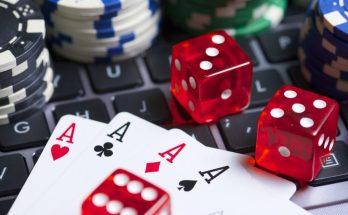Payout rates are determined through complex mathematical formulas programmed into game software before any player spins the reels. Developers assign specific values to each symbol combination and calculate the theoretical return based on probability distributions. Online slot games maintain fairness through transparent RTP percentages, offering players balanced gameplay experiences where free credit rm5 new member rewards enhance the excitement of every spin. The calculation happens during game development rather than adjusting dynamically based on player results.
Symbol distribution controls
Reel strips contain specific numbers of each symbol type, and this distribution directly affects how often winning combinations form:
- High-paying symbols appear less frequently on the virtual reel strips than low-paying symbols
- Wild and scatter symbols get assigned specific positions and frequencies that balance their power
- Weighted reels mean some symbols occupy more virtual positions despite showing the same size visually
- Each reel can have different symbol distributions to create varied probability patterns
- Bonus trigger symbols appear at carefully calculated frequencies to control feature activation rates
A game showing three rows and five reels might have virtual reel strips containing 50 to 100 positions each, though only three positions display at once. The hidden positions determine actual probability. A cherry might occupy 15 positions on a strip while a diamond occupies only two positions. This weighting makes cherries land more often despite both symbols appearing the same size on screen. The weighted distribution creates the probability foundation that produces the target RTP percentage.
Independent testing confirms
Third-party laboratories receive game software from developers and conduct extensive testing before games reach players. These labs run millions of simulated spins using specialised equipment that verifies the game behaves according to its mathematical model. The testing checks whether symbol frequencies match programming specifications and whether bonus features trigger at correct intervals. Testing labs calculate actual RTP from their simulation results and compare it against the developer’s claimed rate. The tested rate must fall within acceptable variance ranges, typically plus or minus 0.5% of the stated RTP. Labs also verify random number generation functions properly and that no patterns exist in outcomes. Only after passing these independent tests can games receive certification for use on regulated platforms.
Timeframe matters for accuracy
Short-term results vary wildly from theoretical RTP because probability requires massive sample sizes to stabilise:
- Over 100 spins, actual return might range from 0% to 300% regardless of programmed RTP
- Over 10,000 spins, results typically fall within 10-15% of stated RTP for most games
- Over 1,000,000 spins, actual return closely matches theoretical RTP within 1-2%
- Individual sessions rarely reflect programmed rates due to insufficient sample size
The RTP percentage represents what happens across astronomical numbers of spins, not what any individual player experiences during typical sessions. The percentage emerges only when aggregating results across all players and extended periods. Short-term variance means players can win or lose far more than RTP suggests during normal play. Payout rate calculations stem from mathematical models programmed during development that assign probabilities to symbol combinations and features. Independent testing verifies these calculations before games launch. The rates represent theoretical returns across millions of spins rather than guarantees for individual playing sessions.




